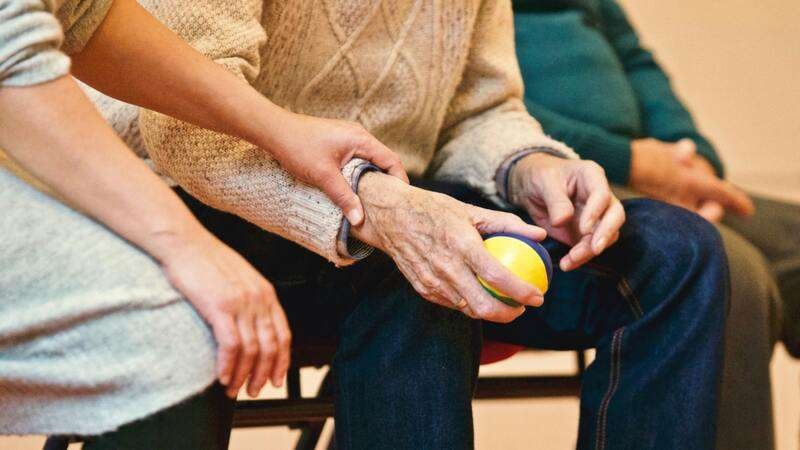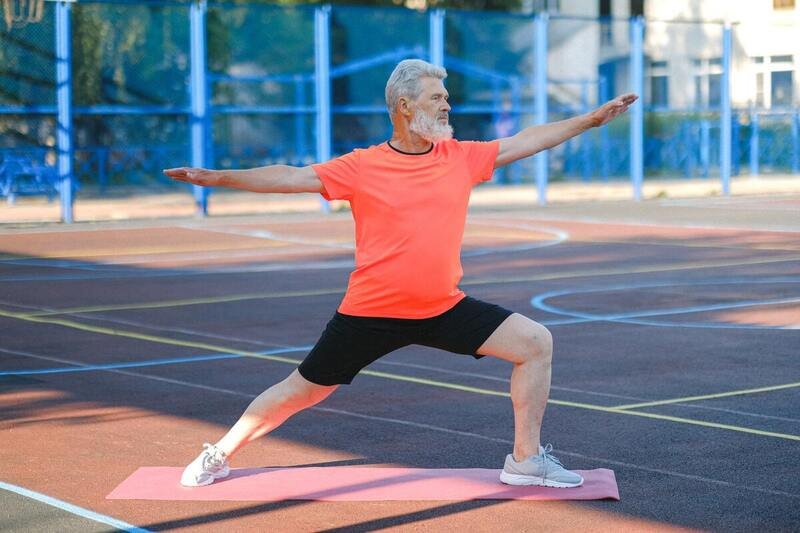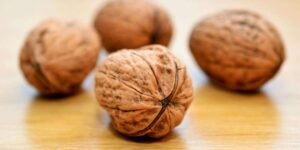
Which Specialist Should I Go to For Sarcopenia? 6 Major Symptoms and 3 Ways of Inspection
Sarcopenia is an important culprit that aggravates chronic diseases in the elderly. According to the journal “International Osteoporosis”, most people begin to lose muscle mass at the age of 40, and 21% of patients over 60 who suffer a hip fracture, then within 1 year after the fracture, most of them will die. When suffering from sarcopenia, due to reduced muscle mass and weakened muscle strength, walking will be slow and unstable, and it is easy to fall, which increases the risk of fractures and disability. In order to effectively prevent muscle loss, we will discuss with you about the symptoms and detection methods of sarcopenia, and explains how to prevent muscle loss through diet and exercise.
Sarcopenia definition
Sarcopenia is a disease of gradual loss of muscle mass, strength and function. It usually occurs in middle-aged and elderly people. It affects the musculoskeletal system and reduces the ability and quality of life. It is also the main cause of weakness, falls and fractures in the elderly. It even requires hospitalization and surgery, thereby increasing the risk of complications such as death and disability.
Sarcopenia also affects people with a high body mass index (BMI). This condition is called “sarcopenic obesity.” Compared with people with obesity or sarcopenia alone, those with both obesity and sarcopenia People with hyporexia are at greater risk of complications
Why is muscle lost? 8 causes of sarcopenia
After the age of 40, muscle mass decreases by an average of 8% every 10 years, and after the age of 70, the rate of decrease in muscle mass increases to 15%. As age increases, muscle mass decreases due to lean body tissue (Lean Body Mass, including muscle, organs, bones excluding fat and water) is lost, and muscle strength will naturally decrease.
The 8 causes of sarcopenia are as follows:
- Cellular changes (mitochondrial damage, oxidative stress, apoptosis)
- Low physical activity
- Muscle fiber atrophy
- Inflammatory response
- Muscle loss
- Nutrition and metabolism (malnutrition, insufficient protein intake)
- Genetic factors
- Endocrine decline (growth hormone, IGF-1, testosterone, estrogen)
6 major symptoms of sarcopenia
- Worsening of grip strength (such as the inability to apply force when twisting a towel)
- Walking slower
- Unable to walk for long periods of time
- Can’t stand up
- Weak muscles make it easy to fall
- I feel powerless every day

Symptoms of sarcopenia in later stages
The more serious symptoms of sarcopenia in the later stages include movement dysfunction, falls, fractures, and even loss of the ability to live independently, thereby increasing the risk of death. Therefore, preventing the occurrence of sarcopenia can not only reduce the risk of disability, but also reduce possible medical treatment. expenses, and the effort and time required to care for patients.
Which specialist should I go to for sarcopenia?
When an elder in the family develops the above symptoms of sarcopenia and suspects the possibility of sarcopenia, they can go to the geriatrics department or rehabilitation department in the hospital for testing.
3 Steps to Self-Testing for Sarcopenia
- Measure the largest calf circumference
Male <34cm
Female<33cm - Measure grip strength
Male < 28kg
Female <18kg - Six meter walking speed
< 1m/second
2 Stages of Sarcopenia testing
Stage 1: Muscle Function Testing
Usually when a hospital or clinic diagnoses sarcopenia, they will first perform muscle function tests, such as: hand grip strength, speed of standing up from a chair, walking speed, and muscle balance function tests.
Stage 2: Instrument Testing
If muscle function is found to be reduced in the first stage, further testing of muscle quality is required. Testing methods include bioimpedance measuring instrument, dual-energy X-ray absorptiometry, computerized tomography, etc.
What to do about muscle loss? Sarcopenia treatment: 6 methods of diet and exercise
There is currently no treatment for sarcopenia. Clinical treatment usually involves disease detection and assessment, nutritional supplementation, and the development of exercise habits to delay or prevent the worsening effects of sarcopenia.
3 methods of sarcopenia diet: What to supplement for muscle loss?
For the elderly, insufficient nutritional intake such as protein, calcium and vitamin D can easily increase the risk of sarcopenia, leading to muscle deterioration, falls and disability, etc. Therefore, in terms of nutritional intake, the following three methods can be followed.
Sarcopenia Diet Method 1: Protein Intake “Quantity, Quality, and Balance”
When consuming protein, you need to take into account three principles: quantity, quality, and balanced intake of three meals to achieve the best absorption effect. The three major principles of protein intake are introduced below:
- Protein intake: The recommended protein intake for those over 70 years old is 1.2 g/kg
The recommended protein intake for adults is 1.1 grams per kilogram of body weight; for the elderly over 70 years old, it is 1.2 grams per kilogram of body weight; elderly people with chronic kidney disease require additional evaluation and adjustment. - Average protein intake in three meals: good absorption, better intake after exercise
In addition to meeting the daily intake of protein, you also need to avoid concentrating protein in one meal, which will cause the body to be unable to effectively absorb it, or increase the burden on the kidneys and liver. It is recommended to consume protein evenly in three meals. In addition, if you can supplement an appropriate amount of protein after exercise, the synthesis efficiency of muscles will be better. - Protein quality: plant-based protein is given priority to reduce health burden
In order to avoid ingesting too much fat, especially saturated fat, while supplementing protein, we recommends that the order of ingesting protein foods is to give priority to plant-based proteins (beans), followed by seafood and eggs. , poultry, and livestock meat; if the diet is entirely based on plant foods as a source of protein, it can be paired with cereals and dried beans to meet the required amino acids.
Sarcopenia Diet Method 2: Sufficient Vitamin D and Calcium
Research pointed out that although UK has insufficient sunshine all year round, more than half of the people in UK are still deficient in vitamin D, with the highest proportion among the elderly. Vitamin D can slow down muscle loss, so it is recommended that the elderly increase their time in the sun and take in more Foods rich in vitamin D, such as deep-sea fish (salmon, mackerel), eggs, dairy products, etc., or additional vitamin D nutritional supplements.
The reference intake amounts of vitamin D and calcium are as follows:
- Vitamin D:
- People aged 1 to 50 years old: 10 micrograms (400 IU)/day
- People over 51 years old: 15 micrograms (600IU)/day
- People aged 1 to 50 years old: 10 micrograms (400 IU)/day
- Calcium:
People over 19 years old: 1000 mg/day
Sarcopenia Diet Method 3: Adequate Calories
Under moderate activity, the daily caloric intake for those over 71 years old is 2150 calories for men and 1700 calories for women.
You may be wondering, People have a serious obesity problem, will their caloric intake not be enough? In fact, for the elderly, as the body’s digestive system deteriorates, their appetite becomes poorer and their absorption capacity decreases, which can easily lead to insufficient caloric intake, which in turn leads to “protein caloric depletion”, that is, the protein in human tissue breaks down into sugar and caloric supply. Body use, resulting in loss of muscle mass.
3 major types of exercise for sarcopenia

Exercise methods to improve sarcopenia include resistance and balance training; exercise intensity is divided into the following three types according to the patient’s physical condition:
- Severely debilitated patient
The purpose of exercise therapy is to maintain muscle strength, muscle mass and body function. In the initial stage, bed exercises are mainly used, such as lifting PET bottles on the bed, performing glute bridge or clamshell exercises. - Able to get out of bed and walk or stroll
You can first design exercises that use your own weight as the load-bearing weight, such as starting with squatting, sit-to-stand training or walking training, and then gradually increase the weight. - Elderly people or patients with better physical strength and functional ability
- Implementing appropriate progressive resistance exercise training, such as dumbbells, elastic bands, stationary bicycles, etc., can help increase muscle strength and prevent muscle atrophy. In order to balance safety and personal interests, you can consult a physical therapist in the rehabilitation department to adjust the exercise items, frequency and intensity. The ideal exercise frequency is 2 to 3 times a week, 30 minutes each time, and the rest time between exercises is 3 to 5 minutes, with a goal of 150 minutes per week.












